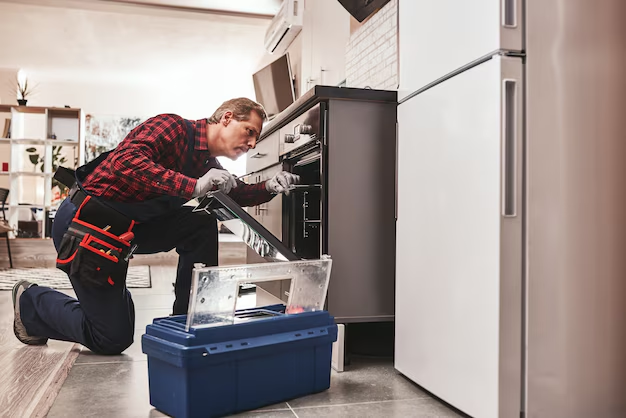Best Practices for Waiting After Moving Your Refrigerator
Moving a refrigerator? You're not alone in wondering how long you should wait before plugging it back in. This topic is vital for maintaining your appliance's longevity and, most importantly, your food's safety. If you're looking to dive deep into this subject, you're in the right place. Join us as we explore the intricacies of waiting times, offer practical advice, and untangle common myths.
Understanding Why Waiting Matters
Protecting Your Appliance
Moving a refrigerator involves more than lifting and relocating. Within, systems are sensitive, especially the compressor. Turning it back on too soon can lead to potential damages. Waiting ensures that the refrigerant has settled in the compressor, which is crucial for the device to function properly.
Ensuring Food Safety
Why is food safety part of the equation? If the refrigerant hasn't settled, your appliance won't cool efficiently, which can jeopardize food safety. Proper cooling prevents food spoilage and bacterial growth.
Key Factors Influencing Wait Times
Layback: Stand Tall
Did you lay your fridge on its side during the move? This factor significantly influences the wait time. Compressors depend on gravity to keep the refrigerant balanced, making the upright position favorable.
🔍 Tip: If laid on its side, wait at least 4 hours. If moved upright, 2 hours should suffice.
Transportation Conditions
Consider the overall conditions of the move:
- Was it a bumpy ride?
- How long was the journey?
These elements can increase the necessary wait time to ensure the internal fluids settle properly.
Model Specifications
Fridges differ. Check the user manual or manufacturer guidelines, as some models might have specific requirements. Compliance with these instructions enhances your appliance's longevity.
Post-Move Steps: A Simple Guide
Step 1: Position the Refrigerator
- Find the Optimal Spot: Ensure it’s level and has a good airflow around it.
- Use a Level: This ensures the proper functioning of the appliance.
Step 2: Wait Patently
- Upright Moved: Wait at least 2 hours.
- Side Moved: Ideally, wait 4 to 24 hours, depending on the duration and conditions of the move.
Step 3: Plug and Chill
- Test the Temperature: Before storing food, ensure the fridge reaches the suitable cooling temperature.
- Check Efficiency: Look for any unusual noises; they might indicate malfunctions.
Debunking Common Myths
Myth 1: Immediate Plug-In Is Fine
Some believe that plugging in immediately has no adverse effects. However, waiting is essential to maintain effectiveness and prevent premature breakdown.
Myth 2: All Fridges Are the Same
They’re not. Smart fridges, smaller models, and industrial versions may each have unique guidelines.
Myth 3: Refrigerator Content Doesn't Matter
The fuller the fridge, the better it will maintain its temperature. When moving it empty, waiting is more crucial to recalibrate before restocking it.
Maximizing Efficiency: Maintenance Tips
Regular Maintenance Checks
- Clean Coils: Dust accumulation affects efficiency.
- Check Seals: Leaks contribute to cooling loss, raising utility bills.
Optimal Temperature Management
- Ideal Settings: Set your fridge between 37°F and 40°F; freezers should be at 0°F.
- Stock It Right: Avoid overcrowding; allow airflow between items to maintain uniform temperature.
Energy-Saving Practices
- Upgrade Your Appliance: Consider energy-efficient models if your fridge is over a decade old.
- Mindful Access: Reduce door-opening frequency to minimize cooling escape.
Visual Summary: Quick Fridge Moving Tips 📋
Pre-Move:
- Ensure Proper Planning: Measure pathways and fridge dimensions.
- Gather Supplies: Sliding mats, towels, and measuring tape.
Post-Move:
- Wait Time: 2-4 hours depending on transportation.
- Internal Check: Ensure cooling before food placement.
Maintenance Checks:
- Every 3 Months: Check coils and seals.
- Annually: Inspect appliance level and airflow.
Moving a refrigerator doesn't stop at its arrival in your kitchen. It's a process that combines patience, prudence, and understanding how your appliance functions. By adhering to these waiting guidelines and maintenance tips, you ensure a long-lasting, efficient cooling companion in your kitchen. Be wise about waiting—it pays off in performance and peace of mind!
